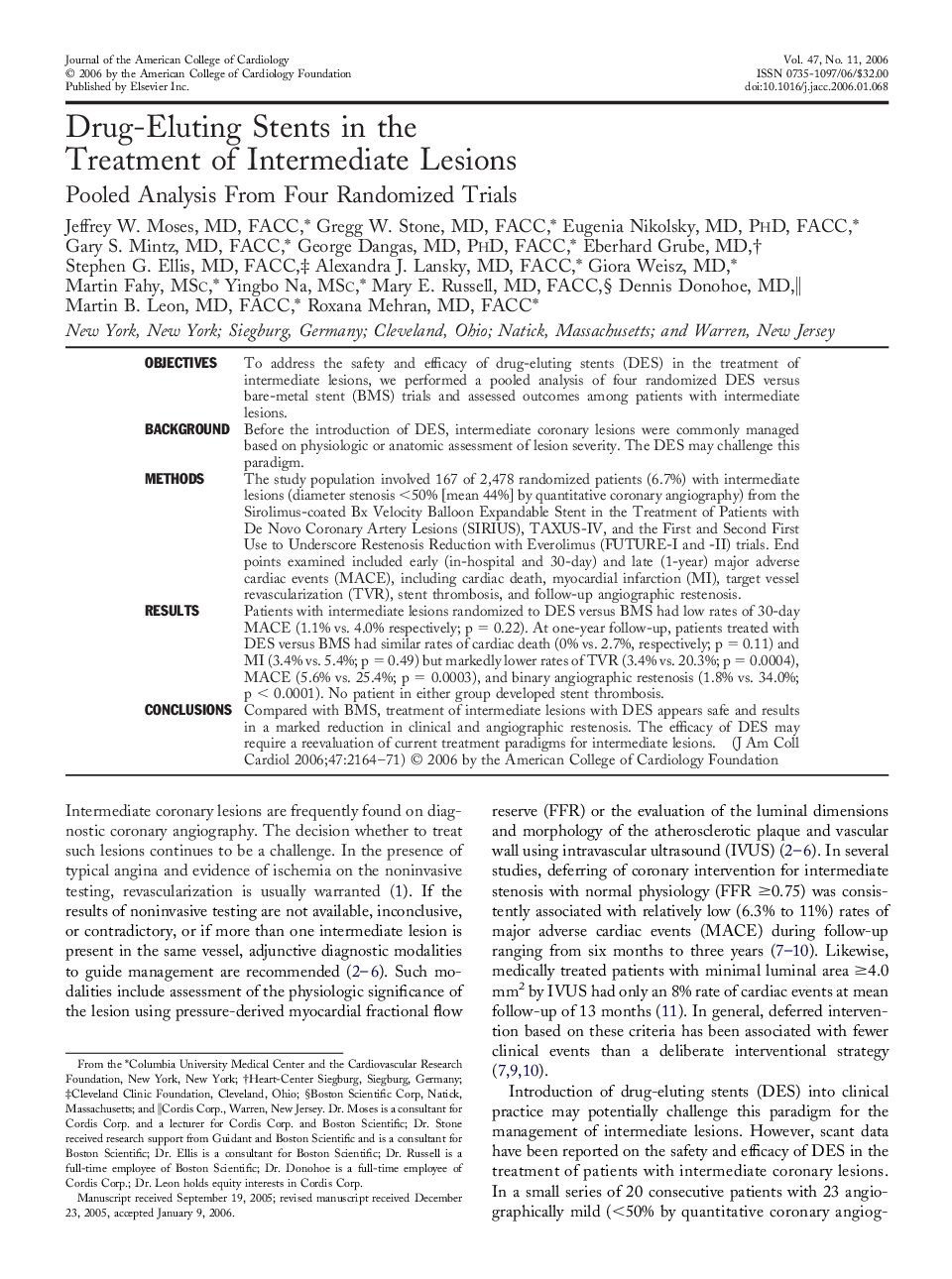| کد مقاله | کد نشریه | سال انتشار | مقاله انگلیسی | نسخه تمام متن |
|---|---|---|---|---|
| 2954152 | 1577510 | 2006 | 8 صفحه PDF | دانلود رایگان |

ObjectivesTo address the safety and efficacy of drug-eluting stents (DES) in the treatment of intermediate lesions, we performed a pooled analysis of four randomized DES versus bare-metal stent (BMS) trials and assessed outcomes among patients with intermediate lesions.BackgroundBefore the introduction of DES, intermediate coronary lesions were commonly managed based on physiologic or anatomic assessment of lesion severity. The DES may challenge this paradigm.MethodsThe study population involved 167 of 2,478 randomized patients (6.7%) with intermediate lesions (diameter stenosis <50% [mean 44%] by quantitative coronary angiography) from the Sirolimus-coated Bx Velocity Balloon Expandable Stent in the Treatment of Patients with De Novo Coronary Artery Lesions (SIRIUS), TAXUS-IV, and the First and Second First Use to Underscore Restenosis Reduction with Everolimus (FUTURE-I and -II) trials. End points examined included early (in-hospital and 30-day) and late (1-year) major adverse cardiac events (MACE), including cardiac death, myocardial infarction (MI), target vessel revascularization (TVR), stent thrombosis, and follow-up angiographic restenosis.ResultsPatients with intermediate lesions randomized to DES versus BMS had low rates of 30-day MACE (1.1% vs. 4.0% respectively; p = 0.22). At one-year follow-up, patients treated with DES versus BMS had similar rates of cardiac death (0% vs. 2.7%, respectively; p = 0.11) and MI (3.4% vs. 5.4%; p = 0.49) but markedly lower rates of TVR (3.4% vs. 20.3%; p = 0.0004), MACE (5.6% vs. 25.4%; p = 0.0003), and binary angiographic restenosis (1.8% vs. 34.0%; p < 0.0001). No patient in either group developed stent thrombosis.ConclusionsCompared with BMS, treatment of intermediate lesions with DES appears safe and results in a marked reduction in clinical and angiographic restenosis. The efficacy of DES may require a reevaluation of current treatment paradigms for intermediate lesions.
Journal: Journal of the American College of Cardiology - Volume 47, Issue 11, 6 June 2006, Pages 2164–2171